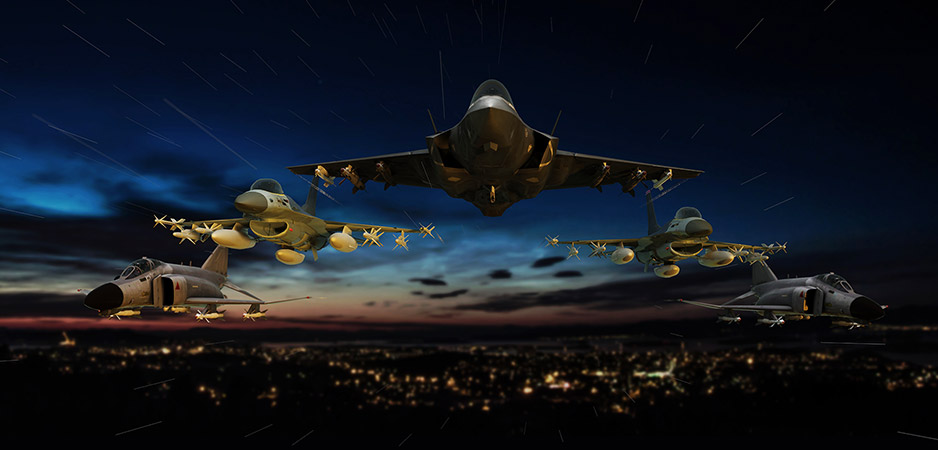Here’s the strange thing in an ever-stranger world: I was born in July 1944 in the midst of a devastating world war. That war ended in August 1945 with the atomic obliteration of two Japanese cities, Hiroshima and Nagasaki, by the most devastating bombs in history up to that moment, given the sweet code names “Little Boy” and “Fat Man.”
I was the littlest of boys at the time. More than three-quarters of a century has passed since, on September 2, 1945, Japanese Foreign Minister Mamoru Shigemitsu and General Yoshijiro Umezu signed the Instrument of Surrender on the battleship USS Missouri in Tokyo Bay, officially ending World War II. That was V-J (for Victory over Japan) Day. But in a sense for me, my whole generation and the US, war never really ended.
Western Sahara: Washington’s Accidental Red Line
The United States has been at war, or at least in armed conflicts of various sorts, often in distant lands, for more or less my entire life. Yes, for some of those years, that war was “cold” — which often meant that such carnage, regularly sponsored by the CIA, happened largely off-screen and out of sight — but war as a way of life never really ended, not to this very moment.
In fact, as the decades went by, it would become the “infrastructure” in which Americans increasingly invested their tax dollars via aircraft carriers, trillion-dollar jet fighters, drones armed with Hellfire missiles and the creation and maintenance of hundreds of military garrisons around the globe, rather than roads, bridges or rail lines (no less the high-speed version of the same) here at home. During those same years, the Pentagon budget would grab an ever-larger percentage of federal discretionary spending and the full-scale annual investment in what has come to be known as the national security state would rise to a staggering $1.2 trillion or more.
In a sense, future V-J Days became inconceivable. There were no longer moments, even as wars ended, when some version of peace might descend and America’s vast military contingents could, as at the end of World War II, be significantly demobilized. The closest equivalent was undoubtedly the moment when the Soviet Union imploded in 1991, the Cold War officially ended and the Washington establishment declared itself globally triumphant. But of course, the promised “peace dividend” would never be paid out as the first Gulf War with Iraq occurred that very year and the serious downsizing of the US military (and the CIA) never happened.
Never-Ending War
Consider it typical that, when President Joe Biden recently announced the official ending of the nearly 20-year-old American conflict in Afghanistan with the withdrawal of the last US troops from that country by September 11, 2021, it would functionally be paired with the news that the Pentagon budget was about to rise yet again from its record heights in the Donald Trump years. “Only in America,” as retired Air Force lieutenant colonel and historian William Astore wrote recently, “do wars end and war budgets go up.”
Of course, even the ending of that never-ending Afghan War may prove exaggerated. In fact, let’s consider Afghanistan apart from the rest of this country’s war-making history for a moment. After all, if I had told you in 1978 that, of the 42 years to follow, the US would be involved in war in a single country for 30 of them and asked you to identify it, I can guarantee that Afghanistan wouldn’t have been your pick. And yet so it’s been. From 1979 to 1989, there was the CIA-backed Islamist extremist war against the Soviet army there (to the tune of billions and billions of dollars). And yet the obvious lesson the Russians learned from that adventure, as their military limped home in defeat and the Soviet Union imploded not long after — that Afghanistan is indeed the “graveyard of empires” — clearly had no impact in Washington.
Or how do you explain the 19-plus years of warfare there that followed the 9/11 attacks in 2001, themselves committed by a small Islamist outfit, al-Qaeda, born as an American ally in that first Afghan War? Only recently, the invaluable Costs of War Project estimated that America’s second Afghan War has cost this country almost $2.3 trillion (not including the price of lifetime care for its vets) and has left at least 241,000 people dead, including 2,442 American service members. In 1978, after the disaster of the Vietnam War, had I assured you that such a never-ending failure of a conflict was in our future, you would undoubtedly have laughed in my face.
And yet, three decades later, the US military high command still seems not faintly to have grasped the lesson that we “taught” the Russians and then experienced ourselves. As a result, according to recent reports, they have uniformly opposed Biden’s decision to withdraw all American troops from that country by the 20th anniversary of 9/11. In fact, it’s not even clear that, by September 11, 2021, if the president’s proposal goes according to plan, that war will have truly ended. After all, the same military commanders and intelligence chiefs seem intent on organizing long-distance versions of that conflict or, as the New York Times put it, are determined to “fight from afar” there. They are evidently even considering establishing new bases in neighboring lands to do so.
America’s “forever wars” — once known as the global war on terror and, when the administration of George W. Bush launched it, proudly aimed at 60 countries — do seem to be slowly winding down. Unfortunately, other kinds of potential wars, especially new cold wars with China and Russia (involving new kinds of high-tech weaponry) only seem to be gearing up.
War in Our Time
In these years, one key to so much of this is the fact that, as the Vietnam War began winding down in 1973, the draft was ended and war itself became a “voluntary” activity for Americans. In other words, it became ever easier not only to not protest American war-making, but to pay no attention to it or to the changing military that went with it. And that military was indeed altering and growing in remarkable ways.
In the years that followed, for instance, the elite Green Berets of the Vietnam era would be incorporated into an ever more expansive set of Special Operations forces, up to 70,000 of them (larger, that is, than the armed forces of many countries). Those special operators would functionally become a second, more secretive American military embedded inside the larger force and largely freed from citizen oversight of any sort. In 2020, as journalist Nick Turse reported, they would be stationed in a staggering 154 countries around the planet, often involved in semi-secret conflicts “in the shadows” that Americans would pay remarkably little attention to.
Since the Vietnam War, which roiled the politics of this nation and was protested in the streets of this country by an antiwar movement that came to include significant numbers of active-duty soldiers and veterans, war has played a remarkably recessive role in American life. Yes, there have been the endless thank-yous offered by citizens and corporations to “the troops.” But that’s where the attentiveness stops, while both political parties, year after endless year, remain remarkably supportive of a growing Pentagon budget and the industrial (that is, weapons-making) part of the military-industrial complex. War, American-style, may be forever, but — despite, for instance, the militarization of this country’s police and the way in which those wars came home to the Capitol on January 6 — it remains a remarkably distant reality for most Americans.
One explanation: Though the US has, as I’ve said, been functionally at war since 1941, there were just two times when this country felt war directly — on December 7, 1941, when the Japanese attacked Pearl Harbor, and on September 11, 2001, when 19 mostly Saudi hijackers in commercial jets struck New York’s World Trade Center and the Pentagon.
And yet, in another sense, war has been and remains us. Let’s just consider some of that war-making for a moment. If you’re of a certain age, you can certainly call to mind the big wars: Korea (1950-53), Vietnam (1954-75) — and don’t forget the brutal bloodlettings in neighboring Laos and Cambodia as well — that first Gulf War of 1991 and the disastrous second one, the invasion of Iraq in 2003. Then, of course, there was that global war on terror that began soon after September 11, 2001, with the invasion of Afghanistan, only to spread to much of the rest of the greater Middle East and to significant parts of Africa. In March, for instance, the first 12 American special-ops trainers arrived in embattled Mozambique, just one more small extension of an already widespread American anti-Islamist terror role (now failing) across much of that continent.
And then, of course, there were the smaller conflicts (though not necessarily so to the people in the countries involved) that we’ve now generally forgotten about, the ones that I had to search my fading brain to recall. I mean, who today thinks much about President John F. Kennedy’s April 1961 CIA disaster at the Bay of Pigs in Cuba; or President Lyndon Johnson’s sending of 22,000 US troops to the Dominican Republic in 1965 to “restore order”; or President Ronald Reagan’s version of “aggressive self-defense” by US Marines sent to Lebanon who, in October 1983, were attacked in their barracks by a suicide bomber, killing 241 of them; or the anti-Cuban invasion of the tiny Caribbean island of Grenada that same month in which 19 Americans were killed and 116 wounded?
And then, define and categorize them as you will, there were the CIA’s endless militarized attempts (sometimes with the help of the US military) to intervene in the affairs of other countries, ranging from taking the nationalist side against Mao Zedong’s communist forces in China from 1945 to 1949 to stoking a small ongoing conflict in Tibet in the 1950s and early 1960s, and overthrowing the governments of Guatemala and Iran, among other places.
There were an estimated 72 such interventions from 1947 to 1989, many warlike in nature. There were, for instance, the proxy conflicts in Central America, first in Nicaragua against the Sandinistas and then in El Salvador, bloody events even if few US soldiers or CIA agents died in them. No, these were hardly “wars,” as traditionally defined, not all of them, though they did sometimes involve military coups and the like, but they were generally carnage-producing in the countries they were in. And that only begins to suggest the range of this country’s militarized interventions in the post-1945 era, as journalist William Blum’s “A Brief History of Interventions” makes all too clear.
Whenever you look for the equivalent of a warless American moment, some reality trips you up. For instance, perhaps you had in mind the brief period between when the Red Army limped home in defeat from Afghanistan in 1989 and the implosion of the Soviet Union in 1991, that moment when Washington politicians, initially shocked that the Cold War had ended so unexpectedly, declared themselves triumphant on planet Earth. That brief period might almost have passed for “peace,” American-style, if the US military under President George H.W. Bush hadn’t, in fact, invaded Panama (“Operation Just Cause”) as 1989 ended to get rid of its autocratic leader Manuel Noriega (a former CIA asset, by the way). Up to 3,000 Panamanians (including many civilians) died along with 23 American troops in that episode.
And then, of course, in January 1991 the first Gulf War began. It would result in perhaps 8,000 to 10,000 Iraqi deaths and “only” a few hundred deaths among the US-led coalition of forces. Airstrikes against Iraq would follow in the years to come. And let’s not forget that even Europe wasn’t exempt since, in 1999, during the presidency of Bill Clinton, the US Air Force launched a destructive 10-week bombing campaign against the Serbs in the former Yugoslavia.
And all of this remains a distinctly incomplete list, especially in this century when something like 200,000 US troops have regularly been stationed abroad and US Special Operations forces have deployed to staggering numbers of countries, while American drones regularly attacked “terrorists” in nation after nation and American presidents quite literally became assassins-in-chief. To this day, what scholar and former CIA consultant Chalmers Johnson called an American “empire of bases” — a historically unprecedented 800 or more of them — across much of the planet remains untouched and, at any moment, there could be more to come from the country whose military budget at least equals those of the next 10 (yes, that’s 10) countries combined, including China and Russia.
A Timeline of Carnage
The last three-quarters of this somewhat truncated post-World War II American century have, in effect, been a timeline of carnage, though few in this country would notice or acknowledge that. After all, since 1945, Americans have only once been “at war” at home, when almost 3,000 civilians died in an attack meant to provoke — well, something like the war on terror that also become a war of terror and a spreader of terror movements in our world.
As journalist William Arkin recently argued, the US has created a permanent war state meant to facilitate “endless war.” As he writes, at this very moment, our nation “is killing or bombing in perhaps 10 different countries,” possibly more, and there’s nothing remarkably out of the ordinary about that in our recent past.
The question that Americans seldom even think to ask is this: What if the US were to begin to dismantle its empire of bases, repurpose so many of those militarized taxpayer dollars to our domestic needs, abandon this country’s focus on permanent war and forsake the Pentagon as our holy church? What if, even briefly, the wars, conflicts, plots, killings, drone assassinations, all of it stopped? What would our world actually be like if you simply declared peace and came home?
*[This article was originally published by TomDispatch.]
The views expressed in this article are the author’s own and do not necessarily reflect Fair Observer’s editorial policy.
Support Fair Observer
We rely on your support for our independence, diversity and quality.
For more than 10 years, Fair Observer has been free, fair and independent. No billionaire owns us, no advertisers control us. We are a reader-supported nonprofit. Unlike many other publications, we keep our content free for readers regardless of where they live or whether they can afford to pay. We have no paywalls and no ads.
In the post-truth era of fake news, echo chambers and filter bubbles, we publish a plurality of perspectives from around the world. Anyone can publish with us, but everyone goes through a rigorous editorial process. So, you get fact-checked, well-reasoned content instead of noise.
We publish 2,500+ voices from 90+ countries. We also conduct education and training programs
on subjects ranging from digital media and journalism to writing and critical thinking. This
doesn’t come cheap. Servers, editors, trainers and web developers cost
money.
Please consider supporting us on a regular basis as a recurring donor or a
sustaining member.
Will you support FO’s journalism?
We rely on your support for our independence, diversity and quality.






